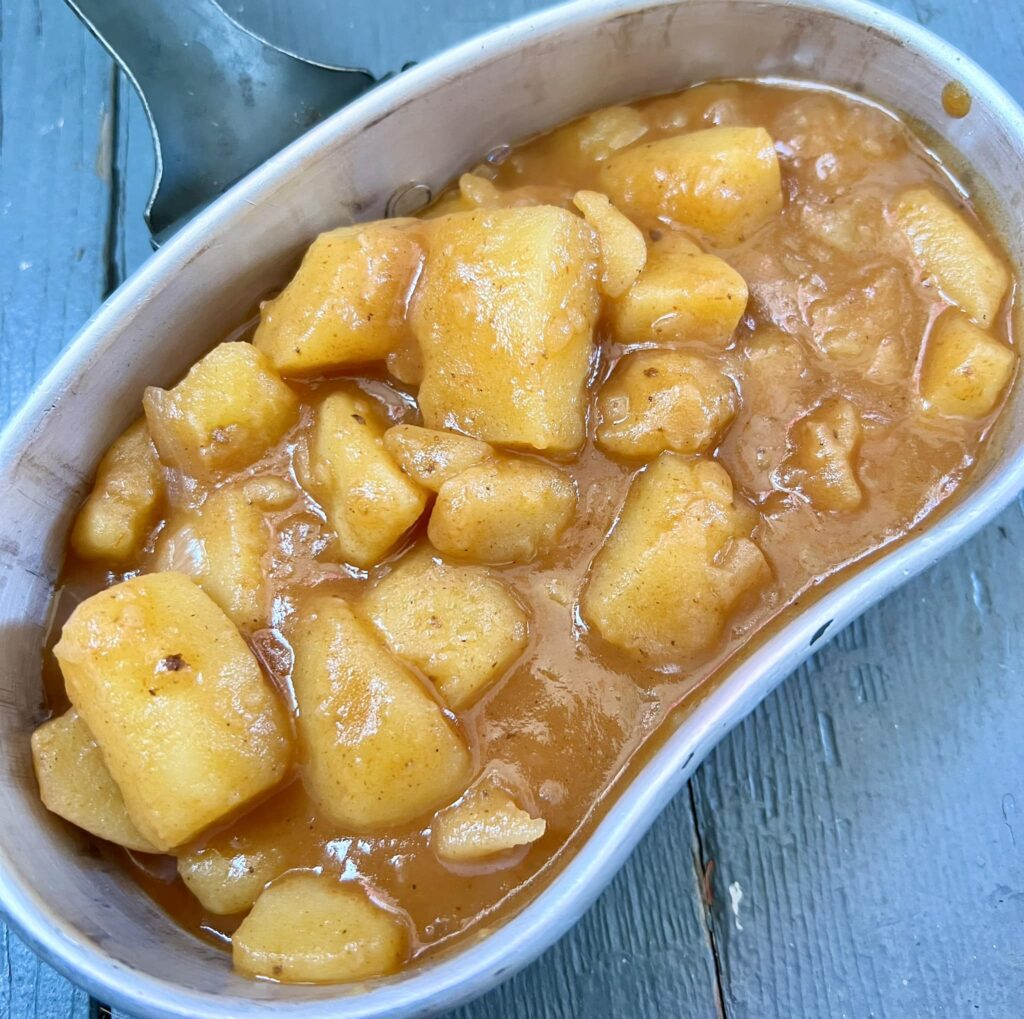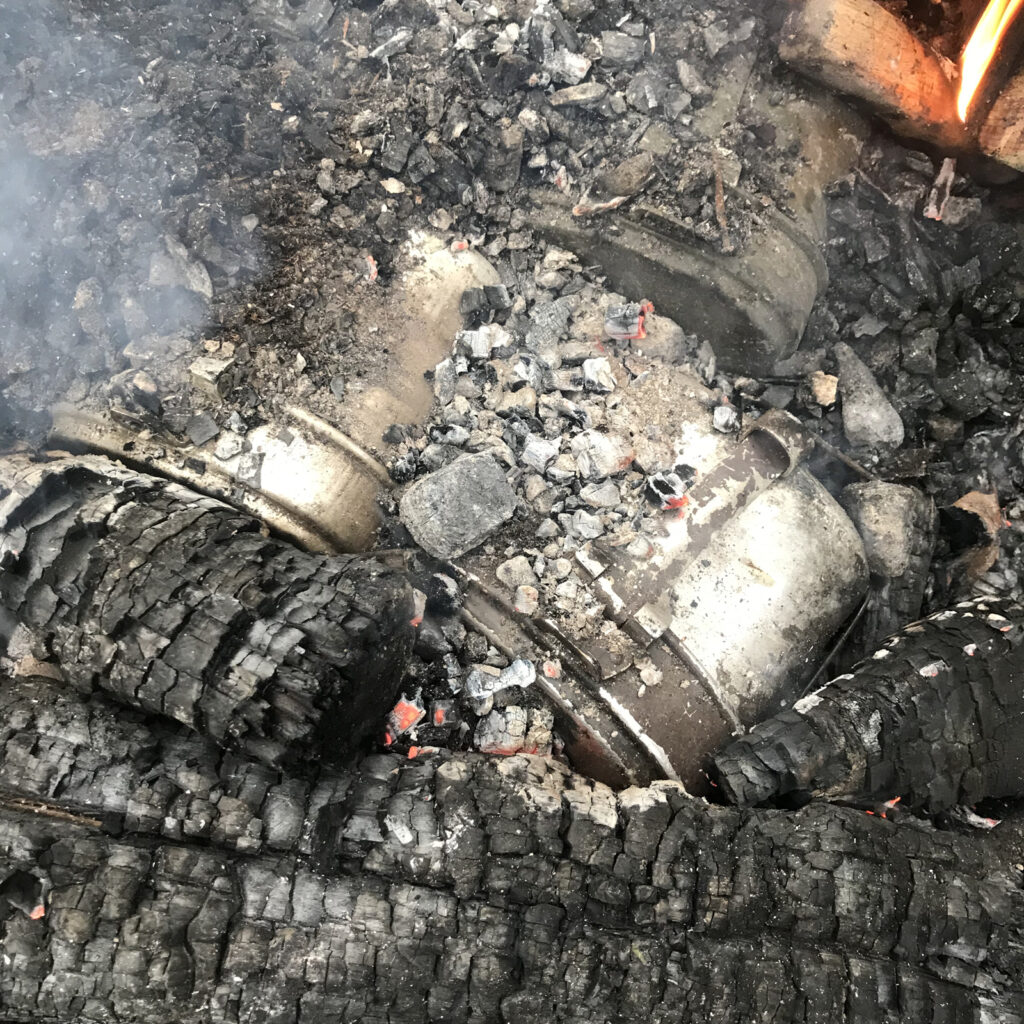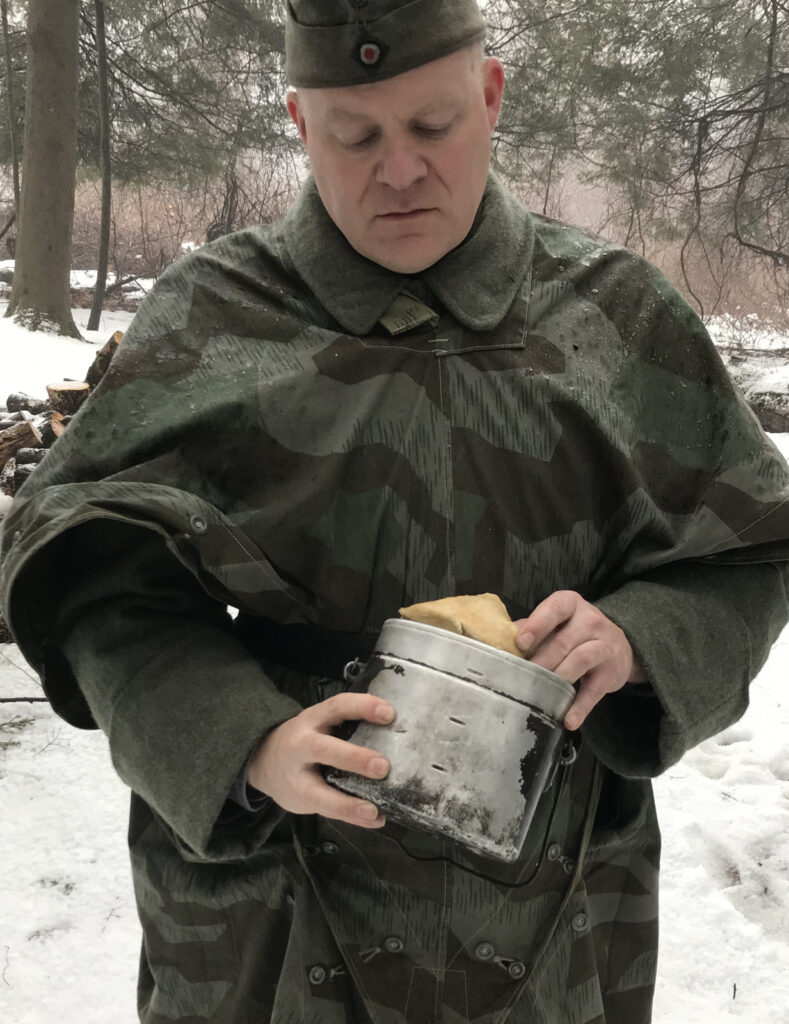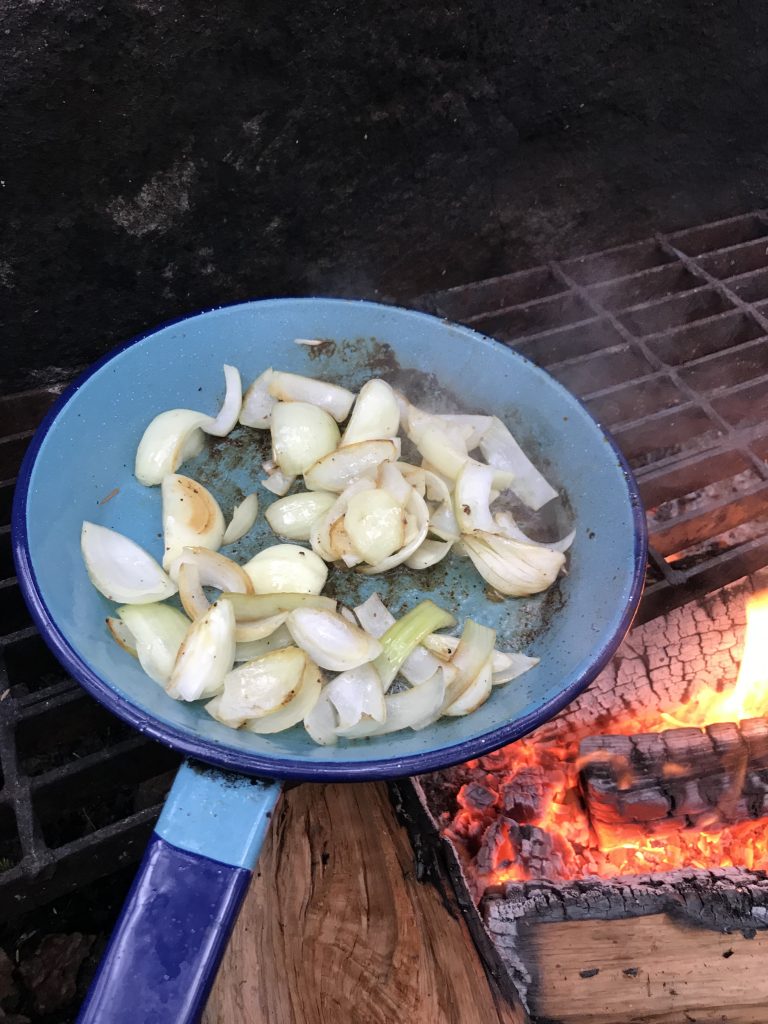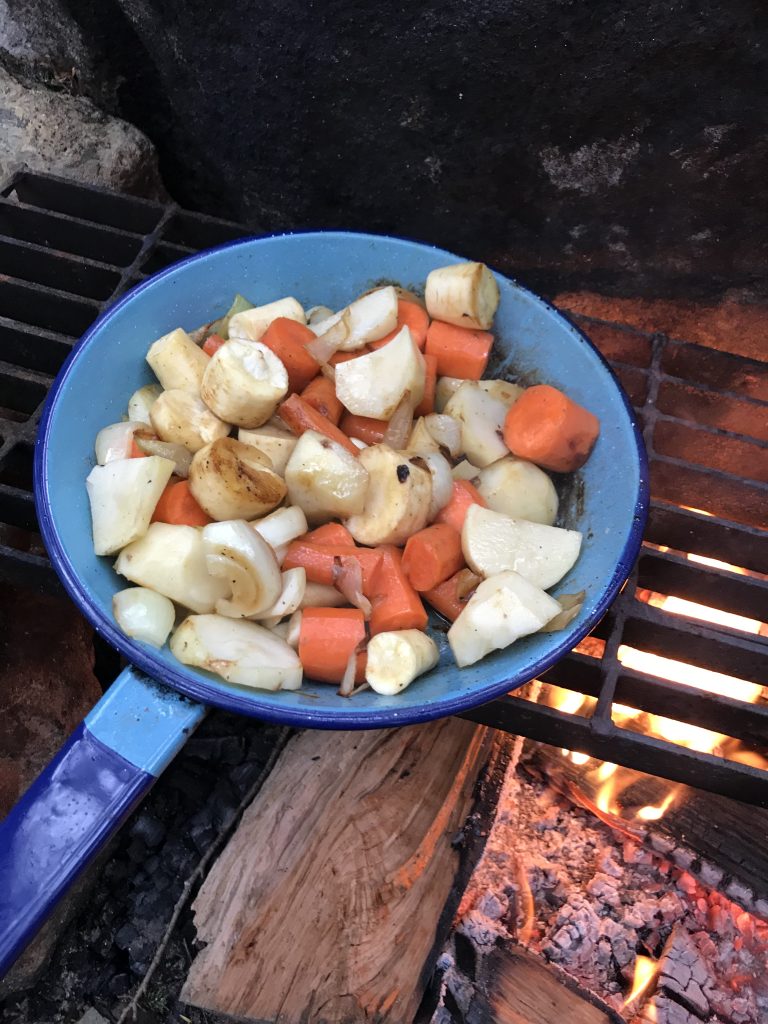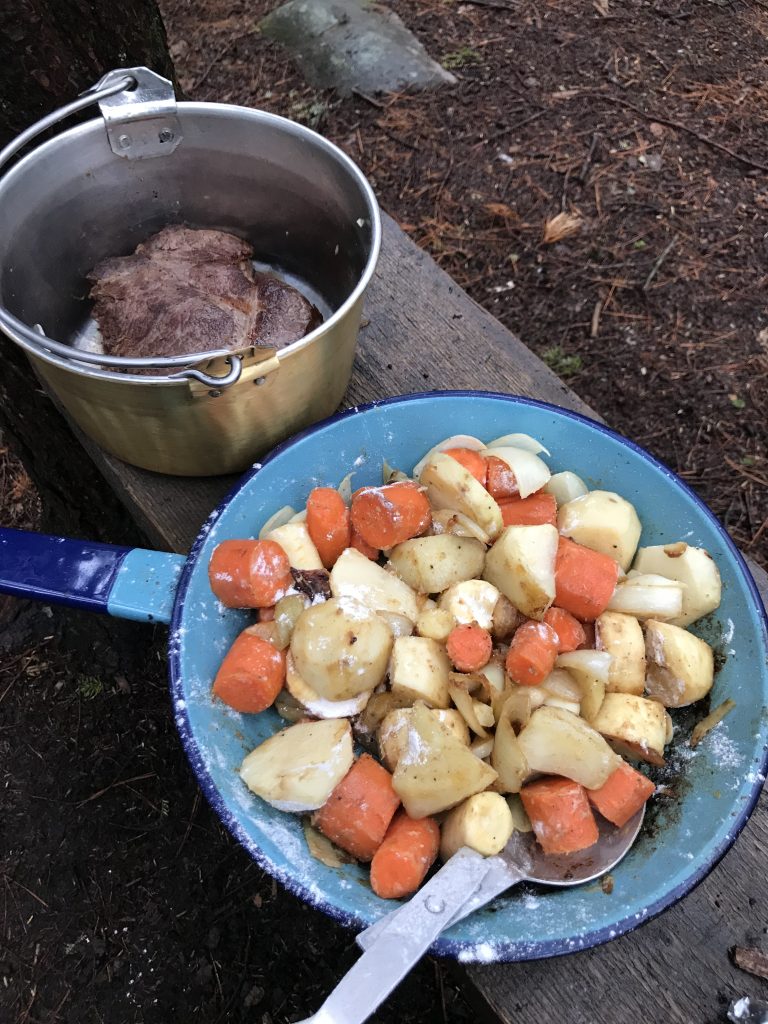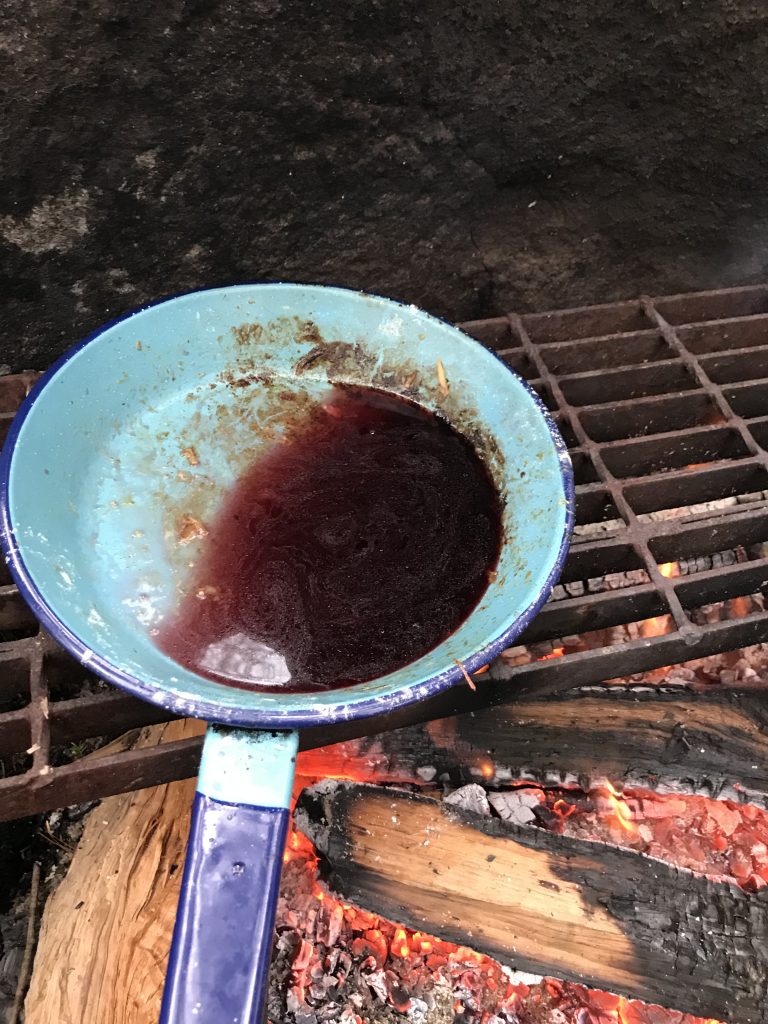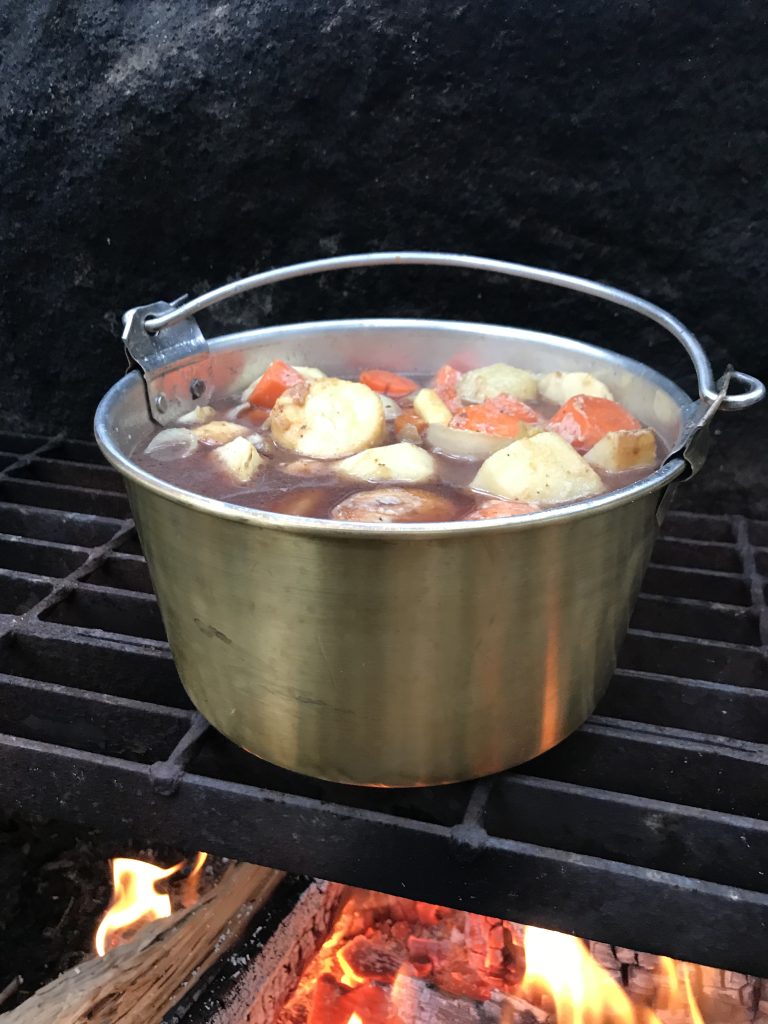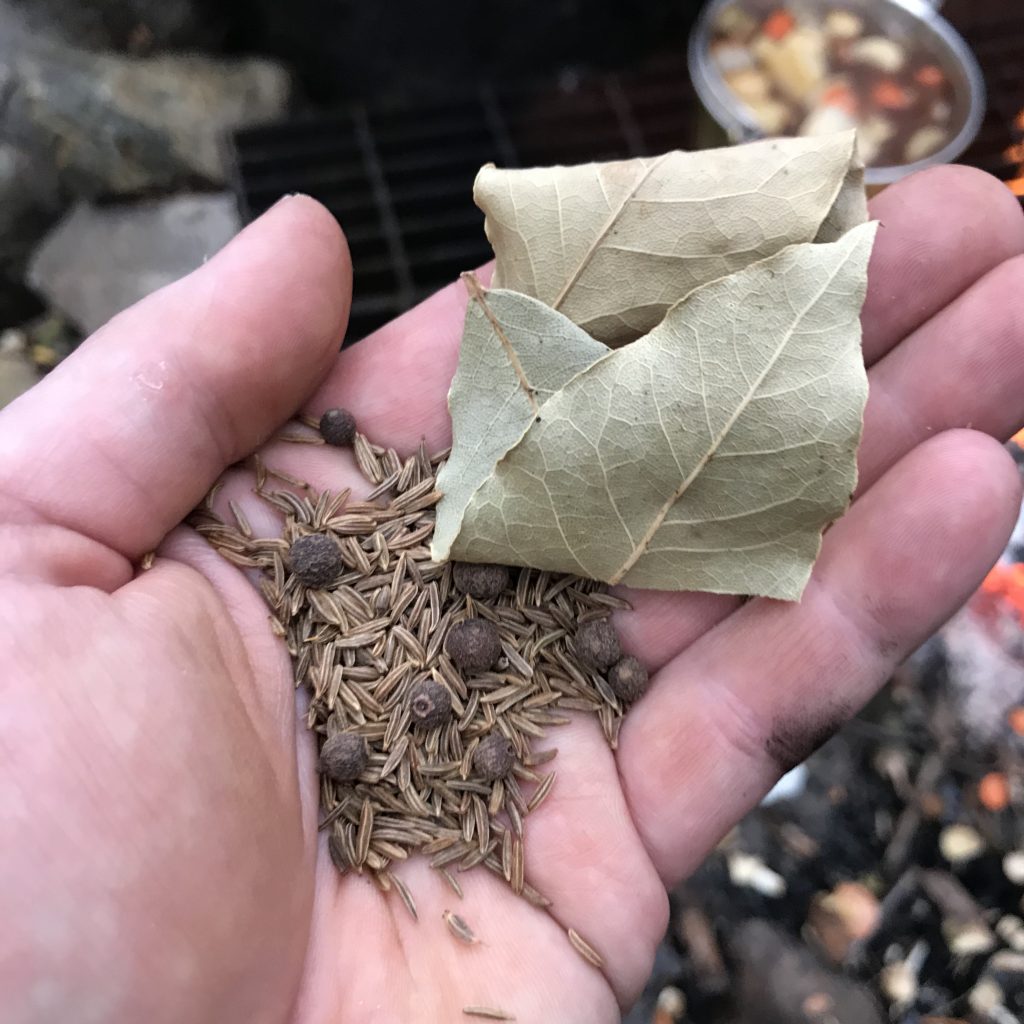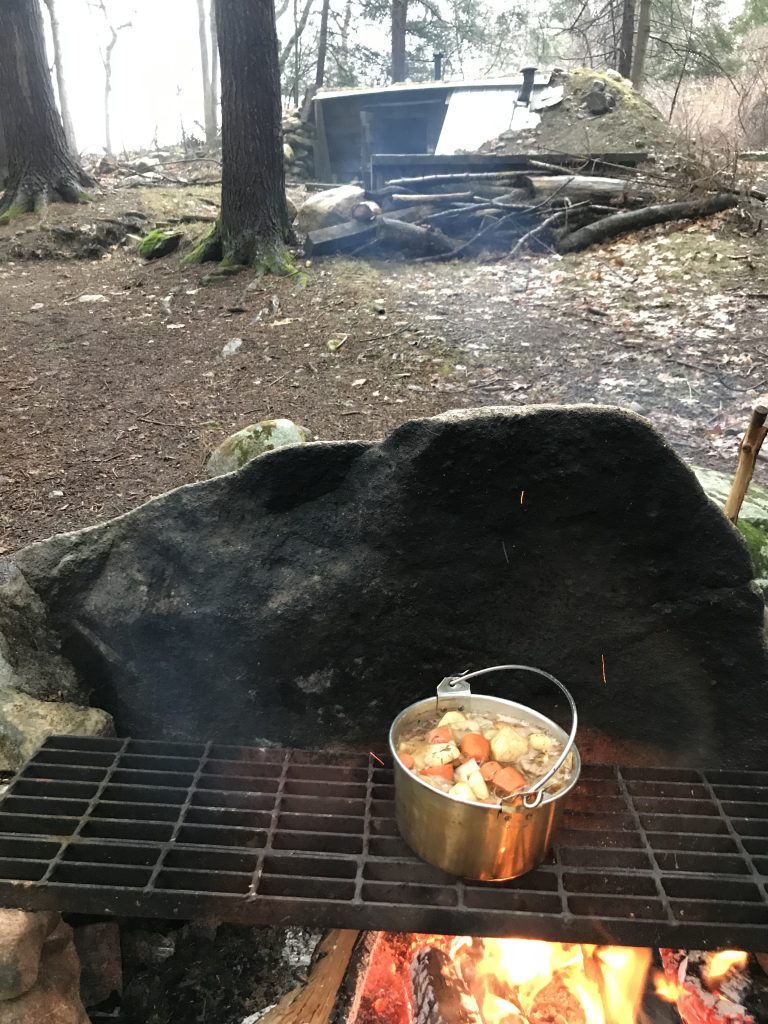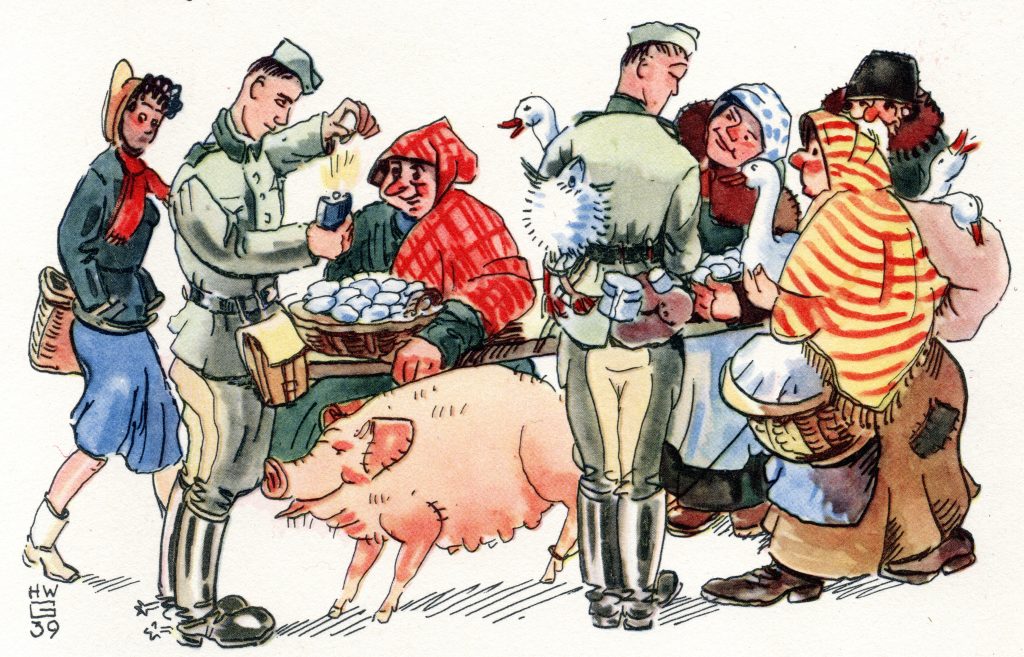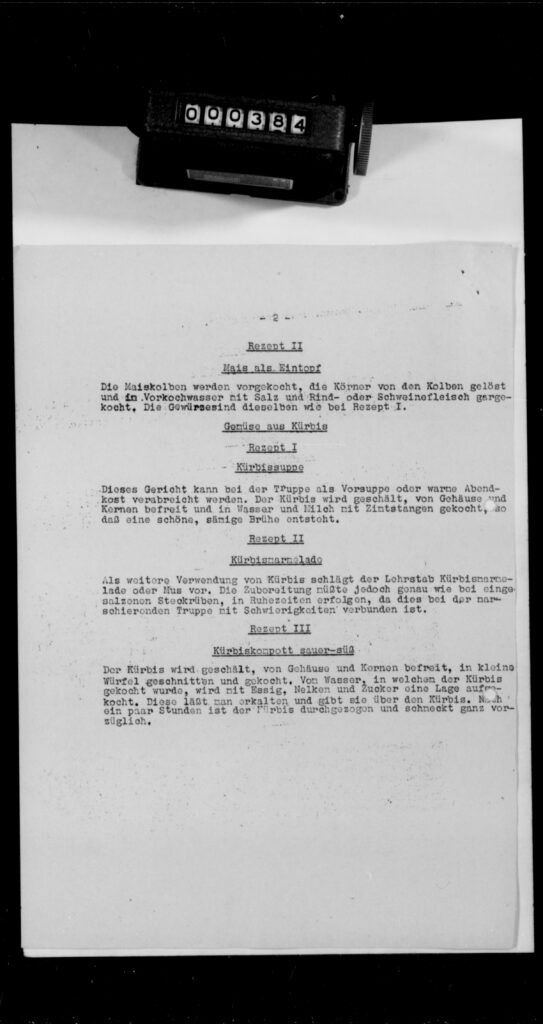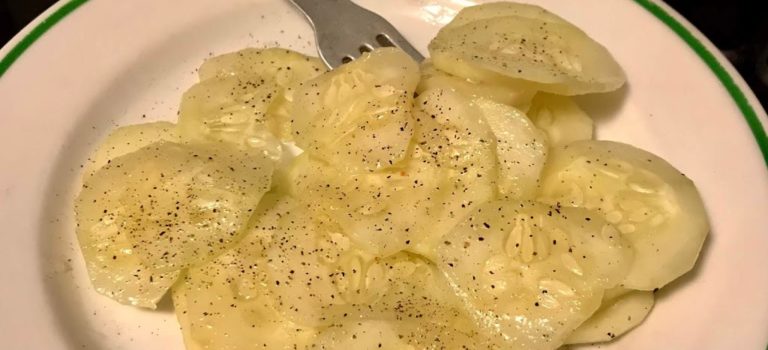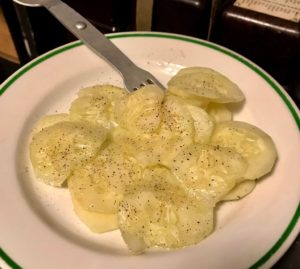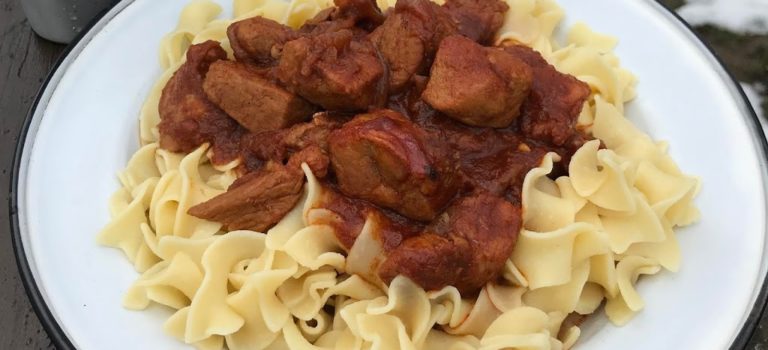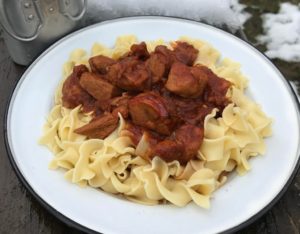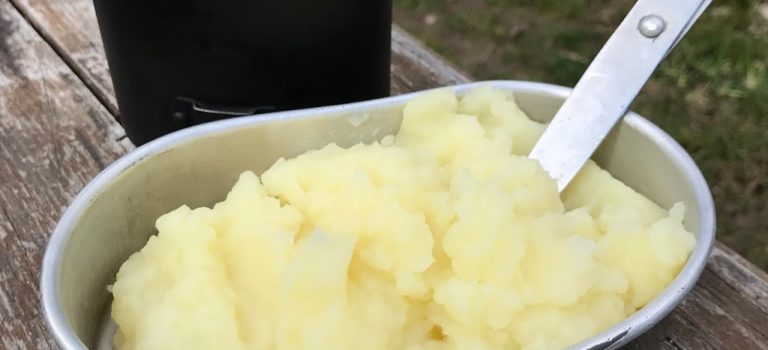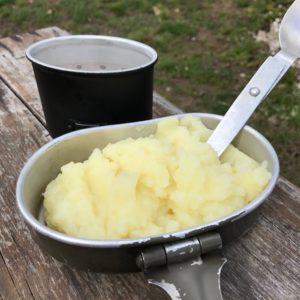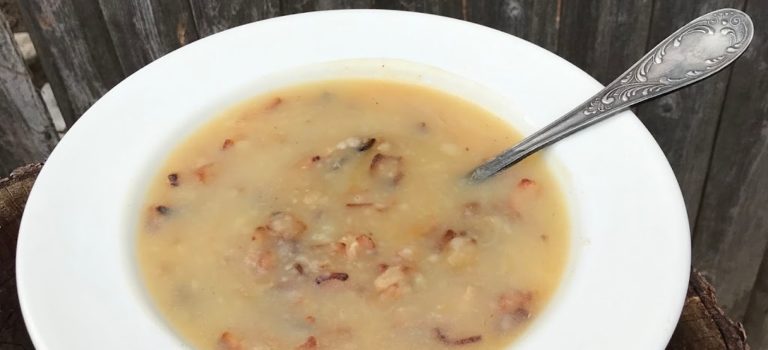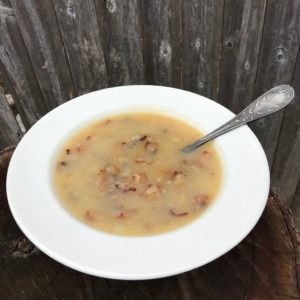Buckwheat groats are a staple grain in Russia. They are healthy and delicious. Where I live, in the USA, there are Russian specialty grocery stores that offer several brands of buckwheat groats.
Wehrmacht personnel fighting on the Eastern Front during WWII had to learn to eat local food that was available, including buckwheat groats. The following recipes were distributed by the supply section of the 281. Sicherungs-Division, in an order dated December 12, 1941.
Buckwheat Groats (Stew) Ration size 100 g
120 g fresh meat
80 g buckwheat groats
125 g fresh vegetables
125 g potatoes
5 g onions
Season with salt
Trim some fat from the meat, fry it and set it to the side. Dice the meat, fry it, add the finelty chopped onions and fry together for a short time. Add the washed groats, together with water (45 parts water to 1 part groats). Boil for about 1.5 hours. Peel and chop the vegetables, peel the potatoes and slice or dice, add to the pot and cook until done.
The finished dish can be seasoned with salt with yeast extract or seasoning, or thickened with soy.
The flavor of the stew can be improved by using wurst broth instead of the water.
Fried Dumplings (or “Falscher Hase”) Made with Buckwheat Groats
60 g fresh meat without bones
20 g buckwheat groats
10 g grated Zwieback
10 g whole soy
5 g onions
10 g fat (from supplies or slice from the meat)
Season with salt and pepper or substitute marjoram for the pepper or savory.
Cook the groats with water (5 parts water to 1 part groats) until you have a firm mass, allow to cool. For meat, take if possible a mixture of half pork ad half beef, and finely grind it in a meat grinder together with the raw onions.
Mix the meat and groats together well, add salt, pepper, soy and grated Zwieback as a binder. Marjoram or savory, if used, should be used very carefully. After mixing well, it is recommended to put the mixture through the meat grinder again. The purpose of this is to achieve maximum mixing of the ingredients, which is of particular importance.
Roll the dumplings (or for “Falscher Hase, the pieces) in grated Zwieback and fry in hot fat.
Bread Spread Using Buckwheat Groats
40 g fresh meat
20 g buckwheat groats
20 g soup greens
10 g sunflower seed oil
5 g onions
Season with salt and pepper
Cook the groats with water (5 parts water to 1 part groats) until you have a firm mass, allow to cool. For cooked meat, take if possible a mixture of half pork ad half beef, and finely grind it in a meat grinder together with most of the raw onions and soup greens. Mix the meat and groats together well. Fry the rest of the onions in the sunflower seed oil until brown, add to the mixture. Season with salt and pepper.
If the spread is a little too thick, add some water or sausage broth. The completed mixture yields 120 g.
The Wehrmacht cookbook “Östliche Speisen nach deutscher Art” has a whole chapter on buckwheat groats:
Buckwheat
Possibilities for use: Buckwheat can be used for soup, porridge, dumplings, risotto, groats, and sweet dishes.
In addition, buckwheat is a great substitute for potatoes in stews. Cook the buckwheat in the stew 30-40 minutes.
Buckwheat thickens when it soaks. In general 20-30 g per person is sufficient.
Buckwheat is a good way to extend ground beef in recipes.
In this manner dry buckwheat can be made into a thick porridge:
The ratio is 300 g buckwheat to 1 liter water.
The cooled buckwheat is thoroughly mixed with the ground meat.
Per person, you need:
50 g meat
20 g buckwheat
65 g water
Taking into account losses in cooking, it yields about 120 grams.
Making Grützwurst with Buckwheat
50 g meat with bones, 20 g dry buckwheat
Cook the meat until tender. Soak the buckwheat in the broth to make a thick porridge. The ratio is 200 g buckwheat to 1 liter broth. The cooked meat is ground and mixed in with the groats. Season as usual.
Buckwheat Soup
Cook 20 g buckwheat and a finely chopped onion in a little fat. Peel and dice a medium potato, finely chop 100 grams vegetables and add them to the fat, cook briefly. Add 1/3 liter water, bring to a boil, add salt, cook until done.
Buckwheat Risotto
Fry onions in fat, add buckwheat and cook together very briefly. Add liquid (ratio: 3 parts liquid to 1 part groats), bring to a boil, cook on low heat until done. After cooking, mix in some grated cheese or cheese powder.
Buckwheat with Beef or Mutton
Dice and brown the meat. Add finely chopped onions, up to 100 g buckwheat, 1 teaspoon tomato paste, cook together briefly. Add water (1 part buckwheat to 2 parts water), bring to a boil and cook until done.
Buckwheat Groats with Tomatoes
Peel and quarter tomatoes and fry in a little fat. Make the buckwheat groats as described above, 10 minutes before being done, add the tomatoes.
Variations
Buckwheat groats with vegetables: instead of tomatoes, use finely chopped and fried vegetables.
Buckwheat groats with fried bacon cubes: Mix fried diced bacon into the groats. The bacon could also be sprinkled on the groats when serving.
Buckwheat Dumplings
Make a mixture of 1 liter buckwheat flour, 30 grams wheat, salt and a little warm milk. Beat into a thick dough and leave 2 hours in a warm place. Make dumplings using a spoon covered in flour. Drop into boiling salt water, cook uncovered until done. Serve with brown butter or some fried fruit.
Fried Dumplings with Buckwheat
Stir 1 part buckwheat into 2 parts boiling water. Bring to a boil, cook on low heat until done, about 20 minutes. Allow to cool and put through a meat grinder with 1 small onion. Mix together with ground meat (1 part buckwheat to 1 part meat). Season with salt and pepper, form into dumplings with wet hands, fry in oil.
Fried Buckwheat Cakes
Soak 75 g buckwheat in 1/4 liter buttermilk to form a thick porridge. Add salt, fried onion, very little garlic, chopped parsley, 50 g flour. Mix all together and add more buttermilk if too thick. Form into little cakes, fry in hot fat. Meant as a side dish to meat dishes, or in a sauce can also be a main course.
Vegetable Stew with Buckwheat
Dice meat, brown in hot fat. Add 50 g buckwheat and up to 500 g finely chopped vegetables and fry together briefly. Add 1/2 liter water, bring to a boil, add salt, cook until done. Season.
Sweet Buckwheat Groats
Add 1 part buckwheat to 2 parts boiling milk. Add sugar, lemon peel, a little cinnamon, and cook on low heat until done. If too thick, stir in more milk. Serve cool or warm with fruit sauce or fried fruit. Note: Vanilla, vanilla sugar or vanilla powder are also good for seasoning this.
